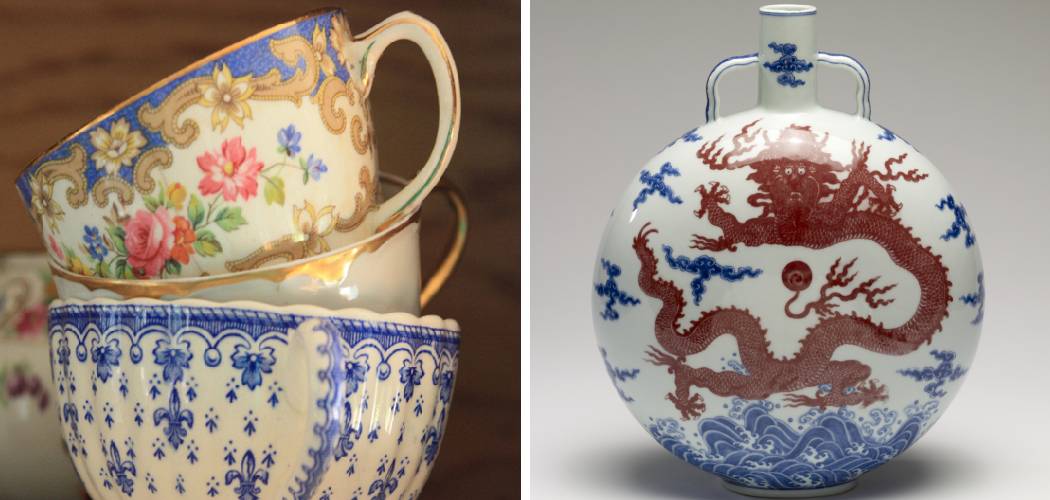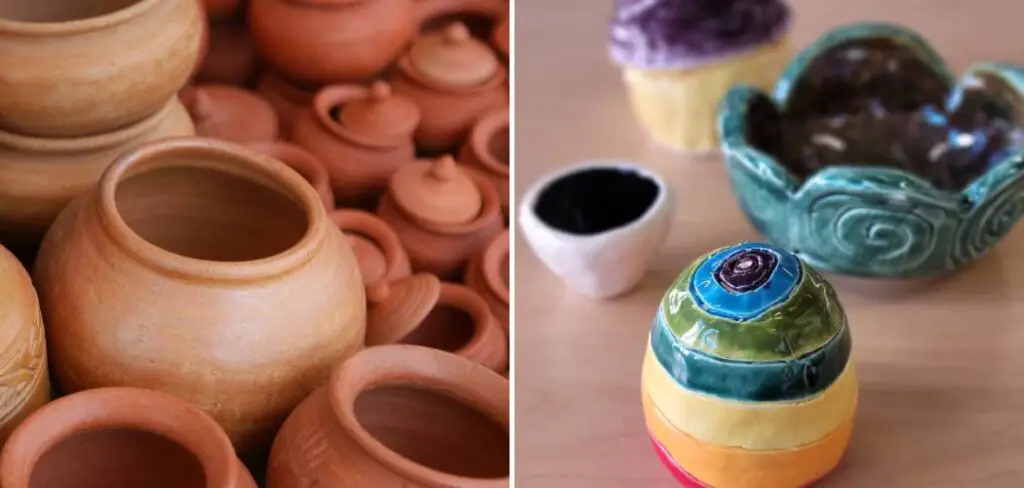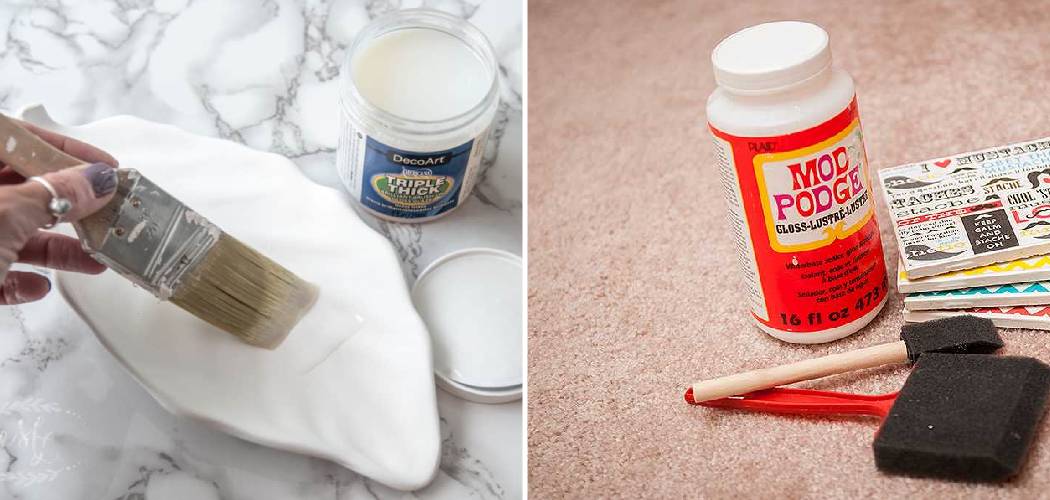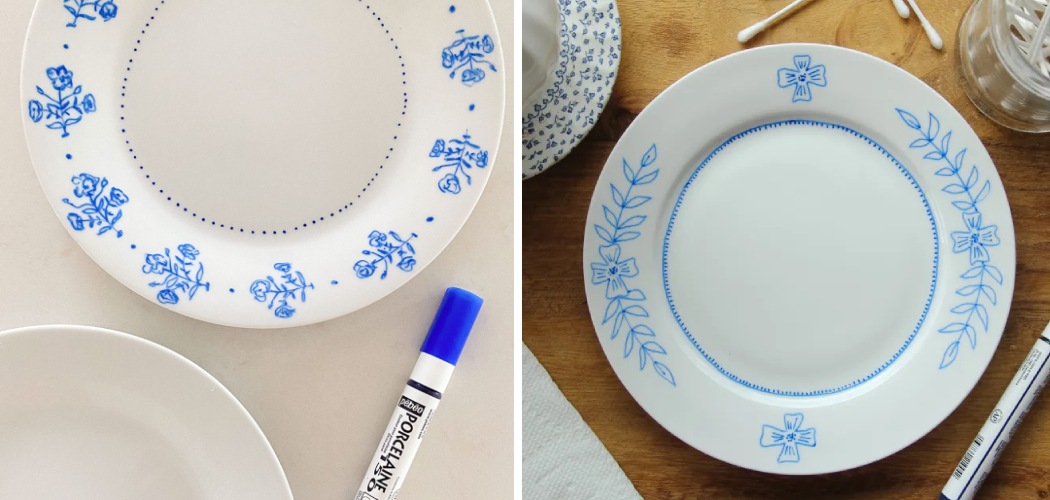Crazing on dishes is a phenomenon that occurs when a network of fine lines or cracks develops on the surface of ceramic or porcelain dinnerware. While these cracks are often small and subtle, they can significantly impact the aesthetics and integrity of the dishes. In this guide, we’ll explore what is crazing on dishes, unraveling the causes behind this phenomenon and its implications for both function and appearance.
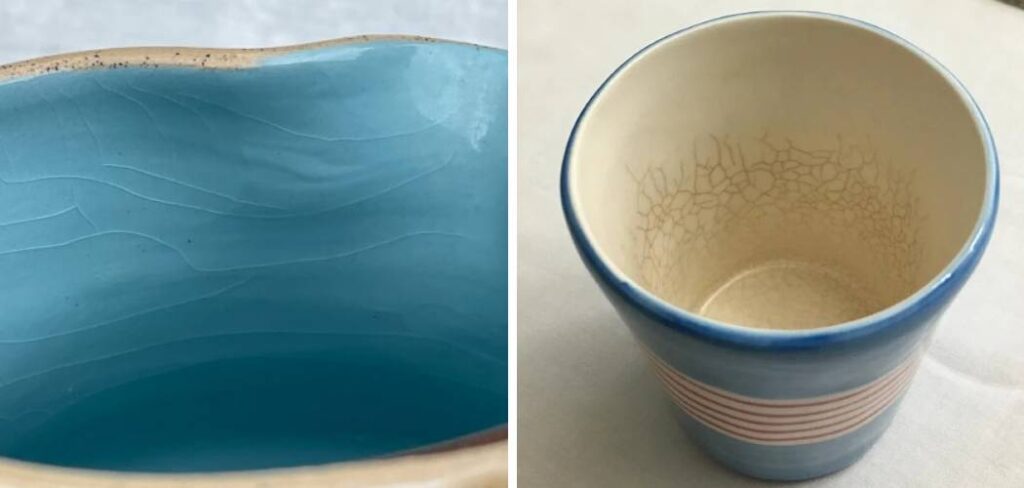
Whether you’re a collector of vintage dinnerware or simply want to understand more about the quality of your tableware, knowing about crazing is essential. Join us as we delve into the world of crazing on dishes, shedding light on its origins, identifying signs to look out for, and discussing potential remedies to preserve the beauty and functionality of your cherished dinnerware collection.
Table of Contents
What Is Crazing on Dishes
Crazing on dishes refers to the network of fine lines or cracks that can appear on the glazed surface of ceramics and porcelain. This phenomenon occurs when there is a mismatch between the coefficient of thermal expansion of the ceramic body and its glaze, leading to tension and eventually the formation of these cracks. Crazing can affect both the aesthetic appeal and, in some instances, the structural integrity of the dishware.
It is not a result of wear and tear from usage, but rather from the inherent properties of the materials and the conditions under which they were fired or exposed to over time. Despite being often viewed as a flaw, crazing does not necessarily mean that the dishware is unusable. However, it can influence the item’s value, especially among collectors and for pieces of significant historical or monetary worth.
The Key Causes of Crazing
Crazing on dishes is primarily caused by a mismatch in the coefficient of thermal expansion between the glaze and the ceramic body. This discrepancy leads to stress on the dish’s surface as it expands and contracts due to temperature changes. Rapid temperature transitions, such as moving a dish from a hot oven to a cool surface, can exacerbate this stress, making crazing more likely to occur.
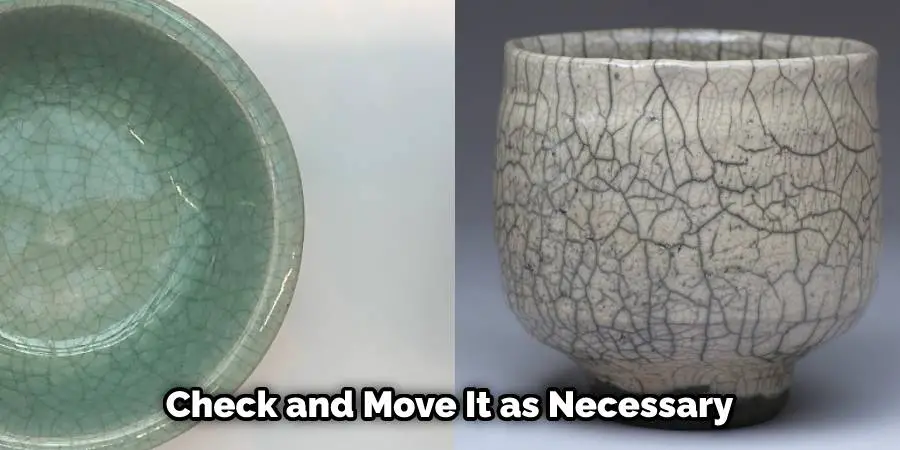
Other factors that contribute to crazing include an overly compressed glaze, which can occur during the firing process if the glaze melts and cools at a rate incompatible with the clay body. Additionally, environmental factors, such as exposure to harsh chemicals in cleaning agents or extended use in microwave cooking, can also play a role in the development of crazing. Understanding these causes is crucial for preventing crazing and managing the condition of ceramic and porcelain dishes effectively.
Are Dishes with Crazing Safe to Use?
The question of whether dishes with crazing are safe for everyday use is often a concern for many. Generally, dishes exhibiting crazing are safe for use in serving food, as the cracks typically only affect the glaze and not the dish’s structural integrity. However, there are considerations to keep in mind. Crazed dishes can harbor bacteria in the tiny cracks, potentially posing a health risk if not properly cleaned. It is advisable to ensure these dishes are thoroughly washed and, if possible, sterilized.
For dishes heavily used or for those with weakened immune systems, using crazed dinnerware might not be the best option. Additionally, if crazing appears on dishes intended for cooking or heating food, especially in microwaves or ovens, it is best to retire them from these purposes. The cracks could allow for moisture infiltration, which might lead to breakage when the dish is heated. Ultimately, while crazed dishes can continue to be used under certain conditions, assessing their condition and cleanliness is crucial for ensuring food safety and durability.
Effects of Crazing on Dishes
The presence of crazing on dishes can have several effects, both aesthetically and functionally. Aesthetically, crazing can give dishes a distinct, antique appearance, which some may find appealing for its vintage charm. However, for most, crazing is considered a detractor, diminishing the visual appeal and perceived value of the dinnerware. The fine network of cracks can make dishes look worn and old, potentially affecting the overall presentation of a meal.
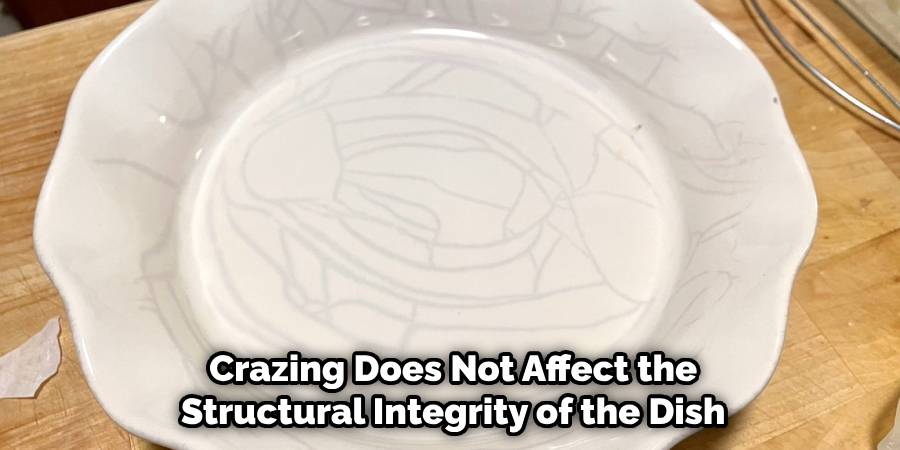
From a functional perspective, crazing can potentially compromise the cleanliness of dishes. The tiny cracks are capable of harboring bacteria and food particles, making thorough cleaning more challenging. This aspect of crazing raises concerns regarding the hygiene of crazed dinnerware, especially in commercial settings or households with members having weakened immune systems.
Furthermore, while the cracks do not initially affect the structural integrity of the dish, over time, repeated stress and exposure to temperature extremes can exacerbate the crazing, possibly leading to larger cracks or even breakage. Understanding these effects is essential for anyone dealing with crazed dishes, whether they are collectors, restaurateurs, or simply individuals trying to maintain the quality and safety of their dinnerware.
Types of Dishware Prone to Crazing
Certain types of dishware are more susceptible to crazing than others, primarily due to the materials they are made from and the conditions under which they were produced. The most common types prone to crazing include:
- Earthenware: As one of the oldest materials used in pottery, earthenware is highly porous and requires a thick glaze to make it waterproof. Unfortunately, this characteristic makes it more prone to crazing, as the glaze and the clay body may expand and contract at different rates.
- Porcelain: While porcelain is known for its strength and translucence, it is not immune to crazing. The high firing temperature required for porcelain can create tension between the glaze and the body, especially if there is an imperfect match in their coefficients of thermal expansion.
- Stoneware: This type of ceramics is less porous than earthenware and is often considered more durable. However, stoneware can still experience crazing if the glaze is not compatible with the clay body or if it undergoes rapid temperature changes.
- Antique and Vintage Dishes: Older dishes, regardless of their material, are particularly prone to crazing. Over time, repeated use and exposure to various temperatures and cleaning agents can exacerbate the stresses between the glaze and clay body, leading to crazing.
- Artisan and Handcrafted Ceramics: While unique and beautiful, handcrafted ceramics often vary in how they respond to the kiln’s temperatures, glazing techniques, and other manufacturing processes. Such variations can make them more susceptible to crazing.
Can I Remove Crazing?
The question of whether crazing can be removed from dishes is complex, as the phenomenon is not just a surface blemish but extends into the glaze itself. Unfortunately, there is no method to completely remove crazing once it has occurred, as the tiny cracks are integral to the glaze layer. However, there are steps you can take to minimize the appearance of crazing and prevent further damage.
Regular, careful cleaning can help prevent the crazing from becoming stained, which can make the cracks more noticeable. It’s also important to avoid sudden temperature changes and harsh chemicals, as these can exacerbate crazing. In some cases, professional restorers may offer solutions to cosmetically treat crazing, but these are typically temporary fixes rather than permanent solutions. The focus, therefore, shifts from removal to management and prevention, ensuring the longevity and appearance of your ceramic and porcelain dishes.
Does Crazing Affect the Value of Pottery?
The impact of crazing on the value of pottery is multifaceted and can vary greatly depending on several factors, including the piece’s age, rarity, and the collectors’ market. For antique or vintage pottery, some level of crazing might be expected and could even be seen as a sign of authenticity, having minimal effect on the item’s value. In fact, in certain cases, crazing can add to the charm and character of a piece, especially if it aligns with the item’s historical context and provenance.
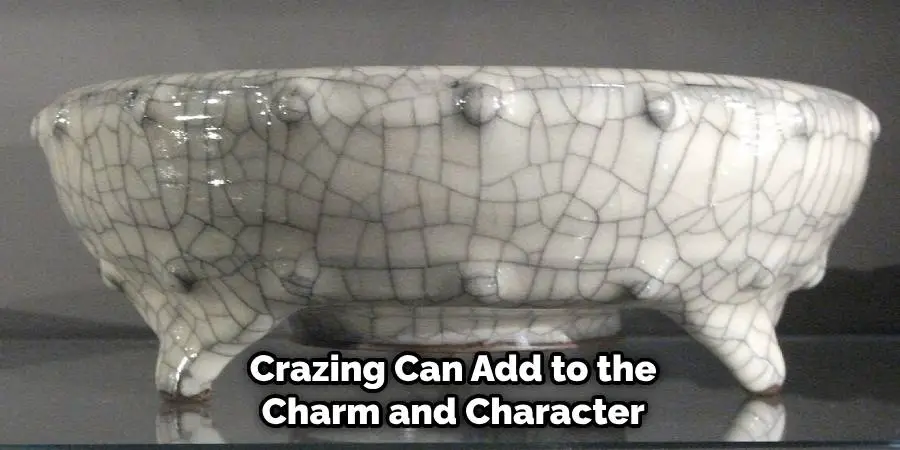
However, for more modern ceramic pieces or those from contemporary artists, crazing is often viewed negatively, as it can detract from the aesthetic appeal and perceived quality of the pottery. In such instances, crazing might reduce the item’s market value, especially if the crazing is extensive or affects the piece’s functionality.
Collectors and enthusiasts are typically well-informed about the conditions that contribute to the value of pottery, including crazing. Therefore, the significance of crazing in evaluating a piece’s worth is highly subjective and can depend largely on the preferences and priorities of the buyer or collector.
Prevention and Maintenance Tips
Preventing crazing and maintaining the quality of your dishware involves several careful practices and considerations. Here are some essential tips to help minimize the risk of crazing and keep your ceramic and porcelain items in pristine condition:
- Avoid Sudden Temperature Changes: Do not expose your ceramics to rapid temperature shifts. For instance, placing a hot dish into cold water or moving it from a cold environment directly into a hot oven can increase the risk of crazing. Always allow items to gradually acclimate to temperature changes.
- Use Gentle Cleaning Methods: Harsh chemicals and abrasive cleaning tools can damage the glaze on your ceramics, leading to crazing. Instead, opt for mild detergents and soft cloths or sponges. Handwashing is preferable, although some dishwasher-safe ceramics can be cleaned in dishwashers on a gentle cycle.
- Proper Storage: Stacking dishes can cause undue stress on the items at the bottom, contributing to crazing. Maintain a cushion of air between stacked items by using fabric liners or placing dishes vertically in a rack when not in use.
- Control Humidity and Environment: Extreme environmental conditions, particularly high humidity, can exacerbate crazing. Store your ceramics in a stable, moderate environment where temperature and humidity levels are consistent.
- Regular Inspections: Periodically inspect your dishware for early signs of crazing. Catching it early can help in taking steps to prevent further damage.
- Avoid Microwave Use: Unless specifically labeled as microwave-safe, avoid using ceramics in the microwave. The intense heat can contribute to crazing.
- Limit Exposure to Direct Sunlight: Prolonged exposure to sunlight can weaken the glaze on ceramics over time, increasing the risk of crazing. Store your items away from direct sunlight when possible.
Conclusion
Crazing in ceramics and porcelain is a common concern that affects both the appearance and longevity of these items. While it’s not possible to completely reverse crazing once it has occurred, understanding the underlying causes and adopting preventive measures can significantly mitigate its impact. By adhering to careful handling, cleaning, and storage practices, collectors and enthusiasts can preserve the beauty and integrity of their cherished pieces.
It is important to remember that the value crazing imparts on pottery can vary greatly, with some viewing it as a detractor and others as a mark of authenticity or historical significance. Ultimately, the approach to managing crazing should prioritize the preservation of the item’s structural integrity and aesthetic appeal, whenever possible. Thanks for reading, and we hope this has given you some inspiration on what is crazing on dishes!
